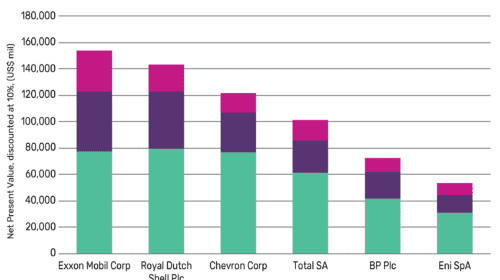The oil and gas industry is increasingly adopting sustainable practices to reduce its ecological footprint, including the use of digital technologies like AI, IoT, and machine learning to optimize production operations. These technologies enable real-time monitoring, data analytics, and automation, improving efficiency, safety, and production yield in the sector. According to Consegic Business Intelligence, the smart oilfield market size is growing with a CAGR of 5.9% during the forecast period (2023-2030), and the market is projected to be valued at USD 2,632.27 Million by 2030 from USD 1,672.37 Million in 2022.
Recent Developments and Innovations
- Carbon Capture and Storage (CCS)– The industry is making significant strides in CCS technology, which involves capturing carbon dioxide emissions from industrial sources and storing them underground to prevent them from entering the atmosphere. Enhanced oil recovery (EOR) projects are integrating CCS to improve oil extraction efficiency while sequestering CO2. Companies like ExxonMobil and Chevron are developing next-generation CCS technologies that promise higher capture rates and lower costs, such as using novel solvents and membranes to enhance CO2 absorption. Major initiatives such as the Petra Nova project in the United States and the Gorgon CO2 Injection Project in Australia are leading examples of successful CCS implementations. These projects demonstrate the feasibility and effectiveness of large-scale CO2 sequestration. Additionally, the Northern Lights project in Norway, a collaboration between Equinor, Shell, and TotalEnergies, aims to create a full-scale CCS value chain, capturing CO2 from industrial sources and storing it beneath the North Sea.
- Renewable Energy Integration – Oil and gas companies are increasingly integrating renewable energy sources such as wind, solar, and geothermal into their operations. For example, Shell and BP are investing in offshore wind farms to power their oil platforms, reducing their reliance on fossil fuels and lowering carbon emissions. Additionally, TotalEnergies has invested in solar energy projects across the Middle East and Africa to provide sustainable power to their operations. Electrification of oil and gas operations, including the use of electric drilling rigs and renewable-powered infrastructure, is becoming more prevalent. This shift not only reduces emissions but also enhances energy efficiency. For instance, Equinor’s Johan Sverdrup field in the North Sea is powered primarily by electricity from shore, significantly reducing its carbon footprint compared to conventional offshore operations.
- Methane Emission Reduction – Advanced technologies like infrared cameras, drones, and satellite monitoring are being deployed to detect and repair methane leaks in real time. These measures are crucial in reducing the greenhouse gas footprint of natural gas production and distribution. Companies like BP and Shell are leveraging AI and machine learning algorithms to predict and prevent methane leaks before they occur. Programs such as the Oil and Gas Climate Initiative (OGCI) and the Methane Guiding Principles bring together leading oil and gas companies to share best practices and technologies for methane emission reduction. The OGCI has set a target to reduce the collective methane intensity of its member companies’ operations to below 0.25% by 2025, highlighting the industry’s commitment to reducing its environmental impact.
- Water Management – Innovations in water treatment technologies are enabling the recycling and reuse of produced water from drilling operations. This reduces the demand for freshwater and minimizes wastewater discharge. For example, Halliburton’s H2OForward technology treats and reuses produced water in hydraulic fracturing, reducing the environmental footprint of water-intensive operations. Companies are adopting sustainable water sourcing strategies, including the use of brackish water and seawater desalination, to mitigate the impact on local water resources. Chevron has implemented seawater desalination projects in arid regions like California and Saudi Arabia to ensure a sustainable water supply for its operations.
Women Leading Sustainable Initiatives
Women are playing a pivotal role in advancing sustainability within the oil and gas industry. Their leadership is evident in various programs and projects focused on environmental stewardship and innovation.
- The Well Done Foundation – The Well Done Foundation, co-founded by Mary Haskett, focuses on plugging and abandoning orphaned oil and gas wells to prevent methane emissions. This initiative not only mitigates environmental hazards but also contributes to carbon offset programs, aligning with broader climate goals. The foundation has successfully plugged over 100 wells in Montana, significantly reducing methane emissions in the region. The foundation emphasizes community involvement and awareness, ensuring that local stakeholders are part of the sustainability conversation. Through educational programs and public outreach, the Well Done Foundation is raising awareness about the environmental impact of orphaned wells and the importance of proper well management.
- Diversity and Inclusion in Sustainability – BP’s leadership team includes women who are spearheading sustainability projects. For example, Anja-Isabel Dotzenrath, EVP of Gas & Low Carbon Energy, is driving BP’s transition to a lower-carbon energy mix, focusing on renewable energy investments and reducing operational emissions. Under her leadership, BP has committed to becoming a net-zero company by 2050, with significant investments in solar and wind energy. Women researchers at ExxonMobil are leading studies on advanced biofuels and carbon capture technologies. Their work is critical in developing sustainable alternatives and improving the efficiency of existing processes. For example, Dr. Vijay Swarup, Vice President of Research and Development, is overseeing projects that aim to convert algae into biofuels, providing a renewable and sustainable energy source.
- Sustainability Education and Outreach – STEM Initiatives: Programs like the Women in Energy Network (WIEN) and the Society of Petroleum Engineers (SPE) are encouraging more women to pursue careers in STEM fields related to energy and sustainability. These initiatives provide mentorship, scholarships, and professional development opportunities to support the next generation of female leaders in the industry. For instance, SPE’s Women in Energy program offers workshops and networking events to empower women in the energy sector.
Case Studies of Successful Projects
- Shell’s Quest CCS Project – The Quest project in Canada captures and stores over one million tonnes of CO2 annually from Shell’s Scotford Upgrader. This project, led by a diverse team, showcases the potential of CCS in reducing the carbon footprint of oil sands operations. The Quest project has sequestered over five million tonnes of CO2 since its inception in 2015, making it one of the largest CCS projects in the world.
- TotalEnergies’ Hybrid Solar Projects – TotalEnergies is integrating solar power into its operations, with projects like the solarization of its oil fields in Qatar and Nigeria. Women engineers and project managers are instrumental in these initiatives, driving innovation and sustainability in traditionally carbon-intensive sectors. For example, the Al Kharsaah solar plant in Qatar, developed by TotalEnergies, is one of the largest solar projects in the Middle East, with a capacity of 800 MW.
- Chevron’s Methane Management Program – Chevron’s Future Energy Fund invests in technologies to reduce methane emissions. The company’s methane management program, led by female scientists and engineers, utilizes advanced monitoring and leak detection technologies to enhance environmental performance. Chevron has implemented real-time monitoring systems at its facilities in the Permian Basin, resulting in a significant reduction in methane emissions.
Conclusion
The oil and gas industry is undergoing a significant transformation as it adopts sustainable practices to address environmental challenges. Recent advancements in carbon capture, renewable energy integration, methane emission reduction, and water management are pivotal in this shift. Women are at the forefront of these efforts, leading initiatives and projects that drive sustainability and innovation. As the industry continues to evolve, the contributions of these female leaders and the adoption of cutting-edge technologies will be crucial in achieving a more sustainable and resilient energy future.
Oil and gas operations are commonly found in remote locations far from company headquarters. Now, it's possible to monitor pump operations, collate and analyze seismic data, and track employees around the world from almost anywhere. Whether employees are in the office or in the field, the internet and related applications enable a greater multidirectional flow of information – and control – than ever before.












